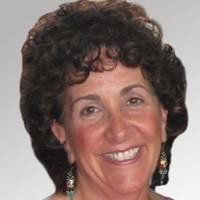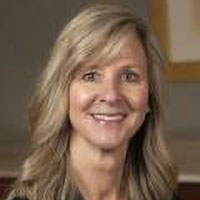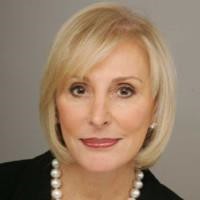The Healthcare category has come into its own during the world’s two years of Covid- 19 focus. And it’s not just the nursing field that has exploded. To get an insight on the executive employment picture, we reached out to major search firms and healthcare leadership for the real picture of the industry’s employment needs and prospects. Hospitals and health care systems may offer the greatest employment opportunities to women today; in fact, they are already mega employers of women, along with the Life Sciences (pharma, biotech, devices, diagnostic testing) sub-sector of the healthcare industry.

From a hiring standpoint, the healthcare industry job market is “on fire right now,” according to Mindy Kairey, Managing Director/Senior Partner forGlobal Healthcare Services at Korn-Ferry. “As a result of the Pandemic, the focus has really shifted to ‘delivering with excellence’ with increased emphasis on customer (patient) engagement.”
“The hiring lid that most Life Sciences firms imposed as soon as lockdowns began, especially at the executive level, has gradually lifted over the past several months as vaccination rollout began in full force in 2nd Q 2021,” explains Jacobs Management Group CEO Cari Kraft, “and now we are experiencing a Life Sciences talent shortage, with companies really competing for candidates.” During the lockdown, Kraft noted that Life Science companies worked hard to protect their workforces, doing everything possible to avoid layoffs and risk a major disruption in productivity once restrictions were lifted. “Employees expressed gratitude for such efforts,” she said, which resulted in increased company loyalty and “reluctance to change jobs until more of the proverbial ‘dust settles’ around the COVID-19 Pandemic.”


Bob Clarke, Chairman of Furst Group, echoed similar sentiments. “Healthcare firms are definitely hiring again,” he reports, but have a new priority as a result of the Pandemic. “More than anything now, my clients are zooming in on agility, looking for leaders who can excel both strategically and tactically. Healthcare organizations are committed now, like never before, to addressing matters of gender and racial inequality in the executive ranks.”
Joan Gee, Managing Partner/Head of the Global Healthcare Solutions and Services practice at DHR International, reports a decided shift in hiring trends driven in part by the consolidation taking place in Healthcare. “Even prior to the Pandemic, clients had begun seeking what they call ‘utility players,’ meaning someone who is a subject matter expert in the position for which they are being recruited but who can also sit at the table with all the other leaders across the organization and add value.” In the current challenging environment Gee believes that people must “work better, faster and stronger.” Another key trend is “a greater emphasis on the ‘Customer’ experience, ibecause hospitals are starting to be reimbursed based on the value and quality of the care they deliver to patients.”


John Baker, EVP and Managing Partner for DHR International’s Global Life Sciences practice, notes that “hiring is up again in all parts of the Life Sciences sub-sector, with the greatest uptick in executive hiring taking place in the ‘diagnostics’ sector, driven by the huge increase in testing demand brought about by the COVID-19 crisis.”
Weighing in on what it takes for the mid-level woman career executive to advance to senior level positions in the healthcare industry, Janice Reals Ellig, CEO of Ellig Group, did not mince words. It’s not about who you know, it‘s about who knows you,” she declared, going on to explain the importance of “working on the ‘right’ projects at the ‘right time’ so that people notice you.” She believes that “women, more so than men, need to ‘show themselves’ and ‘find their voice.” Ellig also stressed the “importance of building your own network of people early (starting in college) and always having a ‘collaborative’ agenda.”

“The healthcare industry is confronting some key challenges today, ranging from an increasingly competitive environment (with some new non-traditional competitors like Walgreens, Walmart and Amazon who could potentially change and disrupt the industry, along with an increasing complex and challenging regulatory environment” says Mindy Kairey. “There is clearly a more sophisticated and discerning corporate customer as well, which could have impact future healthcare hiring initiatives.”
According to Reals Ellig, Women candidates seeking leadership positions in healthcare must understand how to engage with the customer, what the customer journey looks like and how that all leads to creating the best patient experience – major priorities for large healthcare groups and hospitals. She pointed to the increased importance of data analytics and the challenge of effectively harnessing their power to “drive better communication between providers and patients as part of the healthcare industry’s commitment to improving the quality of services delivered.”
And of course, there is “the challenge of an “increasing war for talent,” highlighted by John Baker, “which has implications for candidates, employers and the hiring process in general.”
Healthcare is a huge industry—encompassing wellness, hospitals, pharma, bioscience, medical devices manufacturing, nutrition, research, technology and all of the ancillary businesses that service this world. It’s a fertile playing field with a wide range of opportunities for women from many different backgrounds and expertise, especially sales. So we’ve compiled a list of resources and information for anyone interested in learning more about this employment sector.
Diversity Challenges and Opportunities in the Healthcare Sector
The 2020 report “Women in Healthcare: Moving from the front lines to the top rungs,” by management consulting firm McKinsey, found more female representation at all job levels than in any other key industry segment in the US market. Women hold
- 66% of entry level positions
- 59% of manager positions
- 49% of the senior manager positions
These are significantly higher percentages than in “all other US industries.”
Even though the percentage of women drops in more senior and C-Suite roles, again, they fare better than in other industries. The same study points out, however, that women of color do NOT fare as well on the percentages, occupying only 7% of VP, 4% of SVP and 5% if C-suite positions in the healthcare services industries.
Fortunately, more healthcare organizations are now taking active steps to address this imbalance. For example, in March 2021, just 6 months ago, the Mount Sinai Health System launched Black Women Leaders Connect, a network for African American women in health care leadership that aims to increase the number of Black women in executive positions through mentorship, networking, research and other means. The Healthcare Businesswomen’s Association (HBA) has ramped-up its commitment to foster and accelerate career development within underserved/under-represented groups in the industry. HBA held two interesting initiatives in November: the HOPE Leadership Program and the Women of Color Wellness Summit, both of which were prominent at HBA’s 2021 Annual Conference in November.

